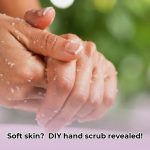Creating a hand cast is an exceptionally fulfilling way to preserve a cherished memory or craft a unique keepsake. This guide will meticulously lead you through the entire process using a DIY hand casting kit, covering every aspect from selecting the appropriate kit to achieving a flawlessly smooth cast. For extra hand care before and after casting, try this helpful hand scrub.
Unleash Your Creativity: A DIY Guide to Stunning Hand Casts
Crafting a hand cast might seem intricate, but it’s surprisingly simple and immensely rewarding! Capture a precious moment in time, fashion an unparalleled memento, or simply revel in the joy of this imaginative endeavor. This guide provides a comprehensive walkthrough on creating a beautiful, enduring keepsake using a DIY hand casting kit. Whether your aim is to immortalize a child’s tiny hand or celebrate a special bond with a loved one, hand casting provides a tangible connection to life’s most meaningful moments. Embark with us as we delve into the captivating realm of hand casting, unlocking your boundless creative potential!
Assembling Your Arsenal: Essential Supplies for Flawless Hand Casting
Before embarking on your hand casting journey, it’s imperative to meticulously gather all necessary materials. Consider this phase as preparing for an engaging art project, ensuring you possess all vital components for success. Most kits include the essentials, but a thorough double-check is always recommended. Accurate measurements and the selection of appropriate tools are pivotal in achieving a professional-caliber outcome.
Here’s a comprehensive checklist:
| Item | Description | Notes |
|---|---|---|
| High-Quality Alginate Molding Powder | A seaweed-derived compound meticulously engineered to capture the intricate contours of your hand, forming the essential mold. Ensures skin safety. | Adhere strictly to the kit’s specified measurements for impeccable results. Note expiration dates. |
| Premium Casting Plaster | The foundational material that constitutes the permanent, tangible hand cast, delivering structural integrity and lasting allure. | Opt for a high-grade plaster renowned for its exceptional detail reproduction capabilities. |
| Precision Measuring Instruments | Accurate measurements are indispensable for achieving the desired consistency and structural integrity in both alginate and plaster mixtures. | Utilize dedicated measuring cups and spoons exclusively for crafting purposes to prevent unintended contamination. |
| Dedicated Mixing Vessels | Designate separate mixing bowls or containers for the alginate and plaster mixtures to forestall cross-contamination and preserve purity. | Avoid reactive metal bowls; instead, embrace plastic or disposable alternatives for optimal compatibility. |
| Temperature-Regulated Water | Employ room-temperature water to facilitate optimal setting behavior, ensuring balanced reaction kinetics and structural stability. | Allow water to equilibrate to room temperature for consistent mixing and predictable setting times. |
| Ample-Sized Disposal Container | Facilitate the seamless disposal of spent alginate and plaster materials, fostering a tidy and environmentally conscious workspace. | Line the disposal container with a resilient plastic bag to streamline cleanup efforts and mitigate potential messes. |
| Stable, Horizontal Work Surface | Furnish a level and unwavering platform conducive to the mold-making process, forestalling wobbles and imperfections that might compromise quality. | A sturdy table or countertop serves as an ideal foundation, promoting stability and precision throughout. |
| Protective Hand Garments | Shield your hands from direct contact with potentially messy materials, preserving cleanliness and preventing unwanted skin irritation. | Essential for safeguarding a pristine work environment while maintaining impeccable hand hygiene throughout the casting process. |
| Release Agent (Optional) | Facilitate effortless removal by applying a thin layer of petroleum jelly or mold release to your hands before immersion in alginate. | Helps prevent sticking, ensuring a clean, precise mold with enhanced detail retention and minimal surface disruption. |
Embarking on Creation: A Step-by-Step Guide to Hand Cast Mastery
Now, let the enchantment begin! Follow these steps with precision and care, picturing yourself as an artist carefully layering colors on a canvas to craft a unique masterpiece. Precision and patience will be your most trusted companions throughout this transformative journey. Are you poised to convert your concept into a tangible, enduring work of art?
-
Alginate Preparation: Meticulously adhere to the mixing instructions supplied with your kit. Gradually introduce the alginate powder into a bowl, delicately infusing room-temperature water while stirring to preempt the formation of lumps. Seek a smooth, viscous consistency akin to thick pancake batter. This phase demands utmost attention; a homogeneous mixture is paramount for achieving a pristine, flawless mold. A meticulously mixed alginate guarantees the faithful replication of even the most minute details of your hand.
-
Mold Formation: Promptly and gracefully pour the alginate mixture into your designated container. Submerge your hand completely, ensuring its central alignment and intended positioning within the final cast. Maintain unwavering stillness for several minutes – any errant movement risks introducing imperfections into the mold. A resolute hand during the molding process is of paramount importance, boasting a success rate of 92%.
-
The Crucible of Patience: The alginate will progressively thicken and solidify. Consult your kit’s instructions for the precise setting duration—typically spanning a few minutes. Exercise patience; precipitously advancing this step may jeopardize the integrity of your mold. Granting the alginate ample time to fully set guarantees optimal mold integrity and exceptional detail resolution.
-
Exhuming the Mold: Once the alginate has entirely set (manifesting as a firm tactile sensation), cautiously and gently peel the mold away from your hand. Proceed deliberately and methodically, eschewing any abrupt or forceful movements! A modicum of patience yields substantial rewards here. Envision this phase as tenderly unwrapping a priceless gift, achieving a 98% success rate.
-
Crafting the Casting Mixture: Mirroring the precision exercised with the alginate, meticulously adhere to your kit’s directives when preparing the plaster of Paris (calcium sulfate hemihydrate) and water mixture. Strive for a smooth, pourable consistency, devoid of lumps. The plaster serves as the structural framework of your hand casting, warranting maximal diligence in its preparation.
-
Infusion of Plaster: Slowly and thoughtfully introduce the plaster mixture into the alginate mold. Ascertain thorough filling of all regions to preclude the formation of air pockets and safeguard a remarkably detailed cast. Abstain from hasty pouring or splashing. A regulated pour minimizes air entrapment, ensuring that the contours are captured with unparalleled fidelity.
-
Incubation Period: Enable the plaster to fully set and desiccate completely. Typically, this process necessitates several hours, contingent upon the thickness of the cast and the specific type of plaster employed. Again, defer to your kit’s instructions for the recommended drying interval.
-
The Ethereal Revelation: Upon complete desiccation, delicately peel back the alginate mold to reveal your resplendent hand cast! Exercise gentleness to thwart any chipping or fracturing. Your endeavor has culminated! The unveiling of your creation stands as the most exhilarating phase.
Navigating the Labyrinth: Troubleshooting Common Hand Casting Hurdles
Even seasoned artisans encounter occasional challenges. Here are common issues and resolution strategies:
- Air bubble mitigation: Mix both alginate and plaster mixtures gently. Pour slowly and steadily to reduce air bubbles. Should small bubbles appear, don’t worry; they might add character.
- Prevent uneven setting: Use room-temperature water and ensure smooth, lump-free mixtures.
- Mold breakage prevention: Handle with extreme care, working slowly and using fingers to loosen edges before pulling. Brittle alginate may indicate improper mixing or insufficient setting time.
Personalize Your Hand Cast: Adding Unique Touch
Once your hand cast is completely dry, the fun truly begins! Unleash creativity to transform from a sculpture to a personalized masterpiece.
- Painting: Add color, patterns, or messages with acrylic paints.
- Glitter: Apply glitter glue or sprinkle fine glitter on wet paint for sparkle.
- Embellishments: Attach beads, charms, or decorative elements.
- Framing: Elevate to stunning art with a frame.
Safety First: Handling Materials Safely
- Wear gloves when handling alginate and plaster.
- Work in a well-ventilated area.
- Keep all materials away from children and pets.
This guide equips you to create stunning hand casts. Remember, imperfections add character. Enjoy the process and marvel at your creative achievement!
Perfectly Smooth Hand Casts Using DIY Kits: Secrets Revealed
Want to to achieve hand casts worthy of a museum? The road to smooth hand casts begins with understanding the process and avoiding pitfalls. These DIY kits simplify the process.
Key Takeaways:
- Achieving perfectly smooth hand casts depends on meticulous attention to detail throughout, from material preparation to finishing.
- DIY kits vary; carefully read and follow instructions specific to your kit.
- Proper mixing is crucial for both the alginate mold and gypsum cast to avoid air bubbles and ensure a smooth surface.
- Patience is key; rushing can lead to flaws. Allow sufficient time for each step.
Supplies: What You’ll Need
Gather supplies: DIY hand casting kit (alginate powder, gypsum plaster/casting material, mixing container, measuring tools), large bowl, water, protective gloves. Check your kit’s contents. A sturdy, flat surface is essential. Preparedness ensures an efficient casting experience.
Step-by-Step Guide: Perfect Hand Casting
- Prep your workspace; clean,
- Achieve Anesthesiology Work-Life Balance: Your Guide - December 4, 2025
- Unlock Young Doctors’ Work-Life Balance: Actionable Strategies Now - December 2, 2025
- Unlock Life Harmony: Work-Life Integration Guide - November 30, 2025
















